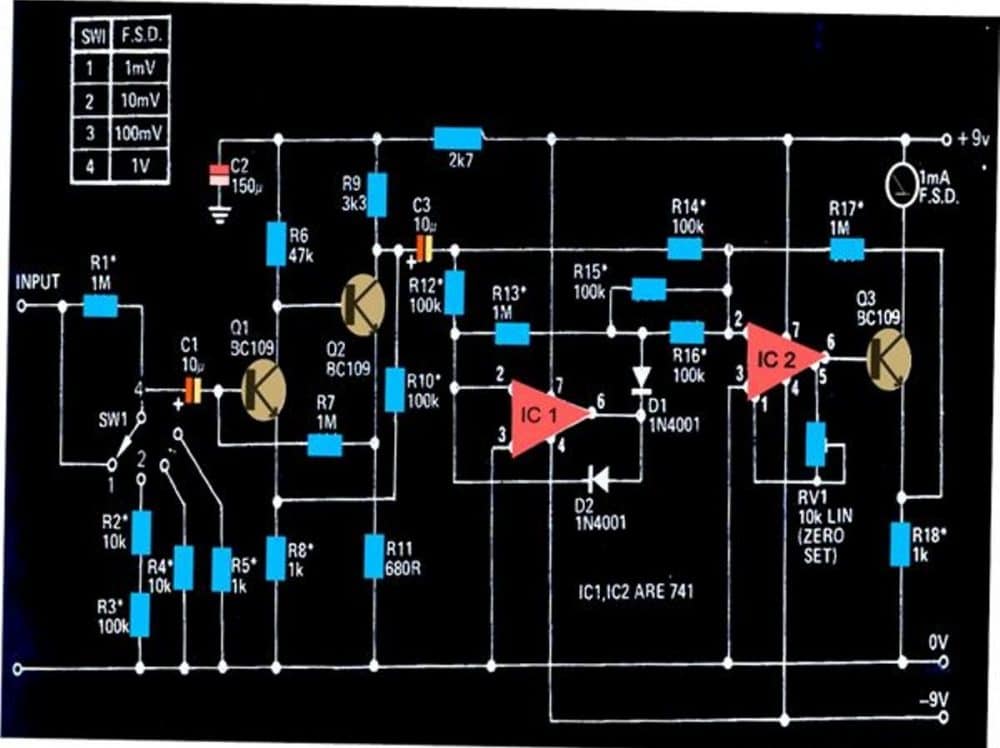In this piece, we examine a millivolt meter circuit built around an operational amplifier that is intended to precisely measure AC millivolts. Let's examine the specifics through the explanation that follows.
Measurements of DC potentials in the millivolt region could be made with the circuit below.
With a calibration range of 1 mV at the least and 1 V at the highest, the circuit is very sensitive.
Conventional multimeters typically have trouble detecting voltages in the millivolt range.
This circuit is capable of detecting extremely small AC impulses, down to 0.1 mV.
How the Circuit Works
Using the elements that are visible, the amplifier stage could be set to provide a gain of 100. The transistors Q1 and Q2 have been set as a high-gain feedback form of amplifier.
The couple of 741 ICs in the following stage, IC1 and IC2, have been configured as precision rectifiers.
When combined, they may produce a gain of ten throughout a possible bandwidth of over 50 kHz but less than 20 Hz.
Hence, the circuit's average gain is in the region of 1000, meaning that signals less than 1 mV must be well muted.
The AC millivolt meter circuit is simple to set up; all that has to be done at first is alter the preset RV1, which causes the attached meter to display a zero indicating that there is no signal at the input.
Every resistor with an asterisk (*) needs to be an MFR type with a 1% rating.

Leave a Reply